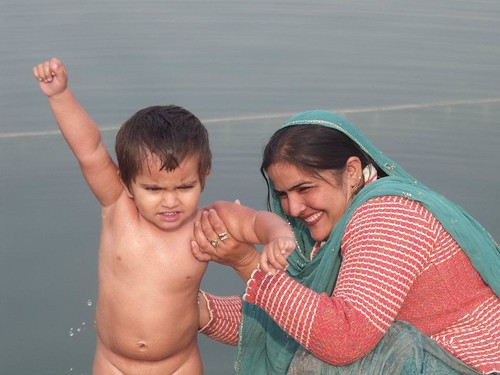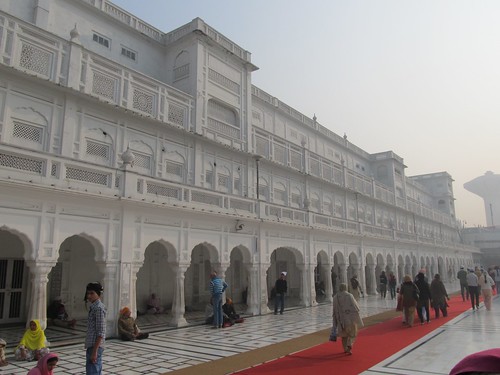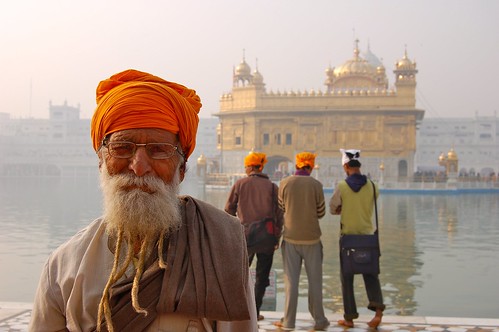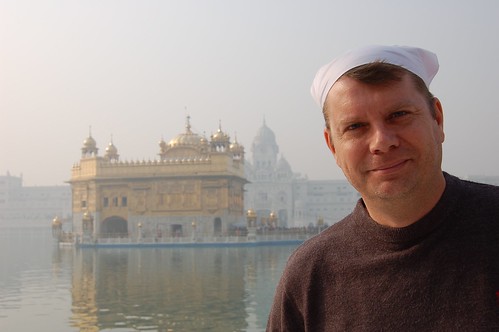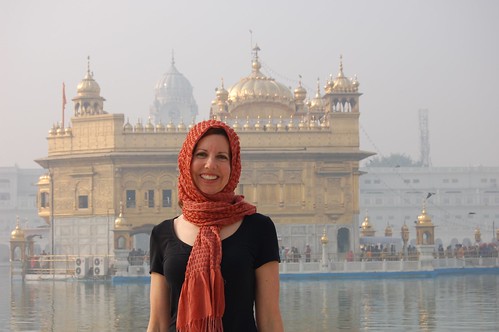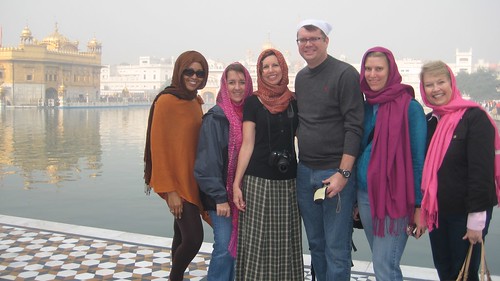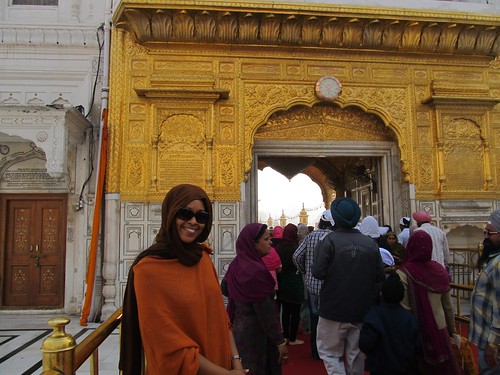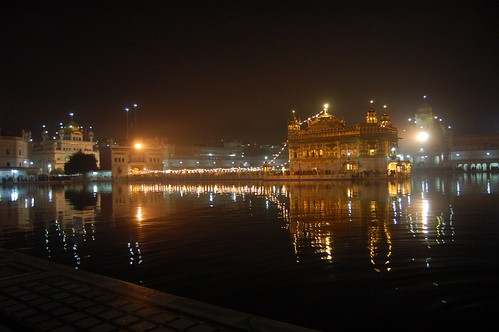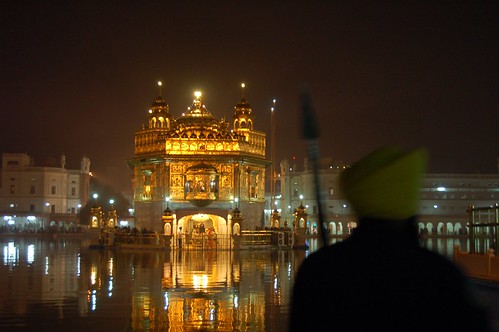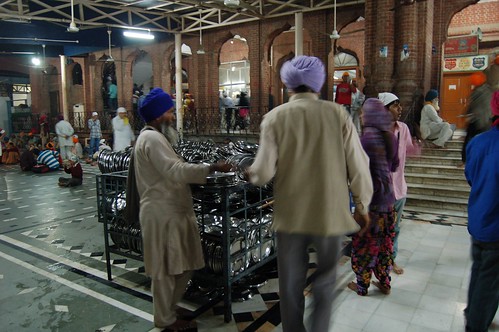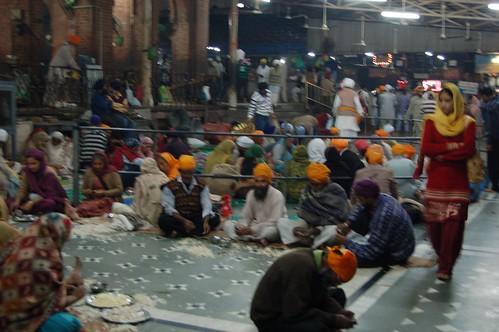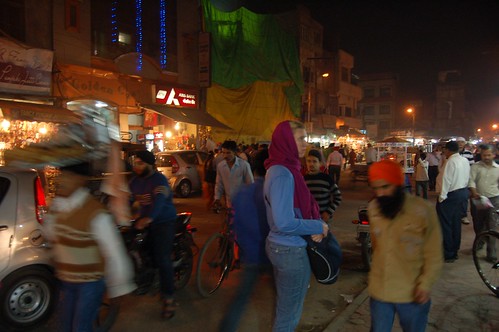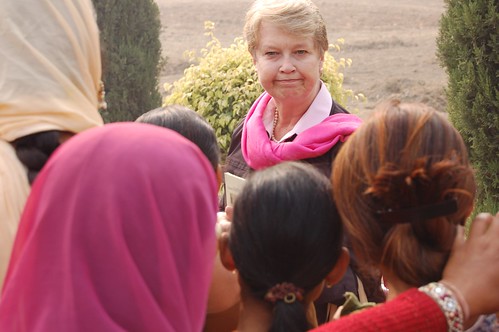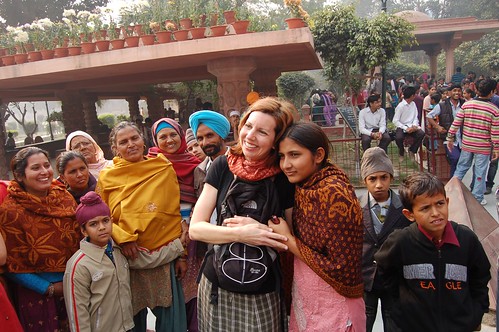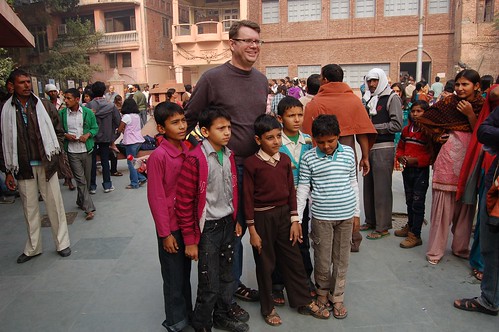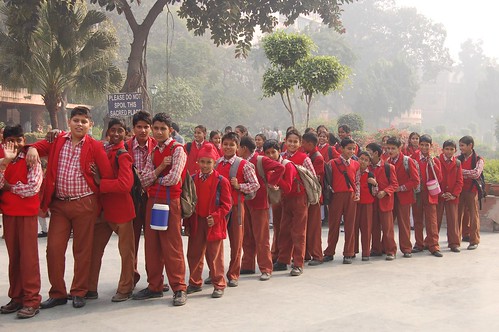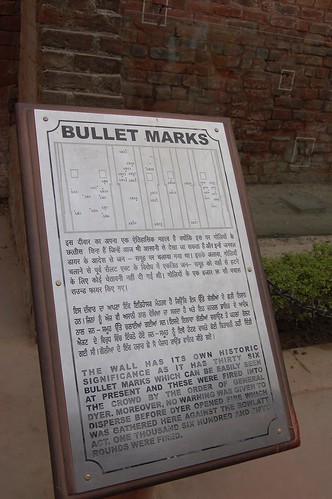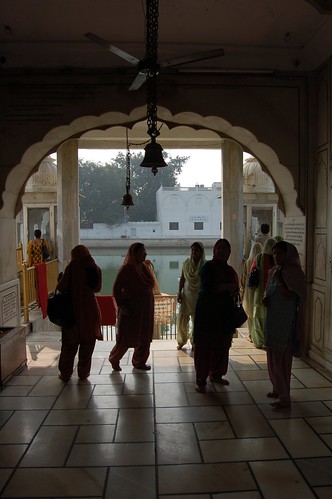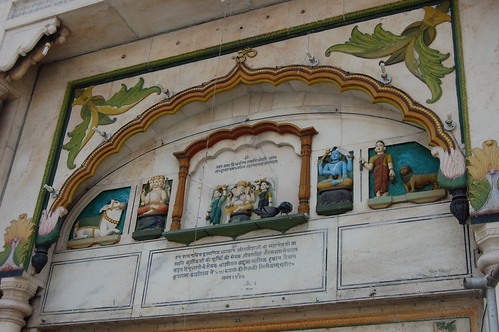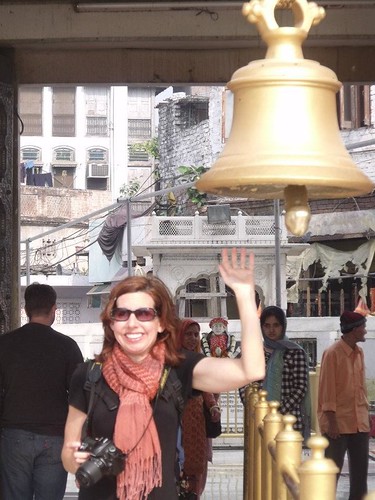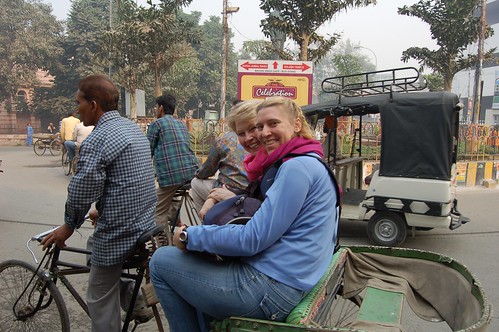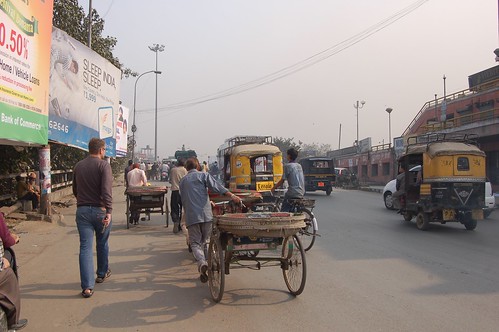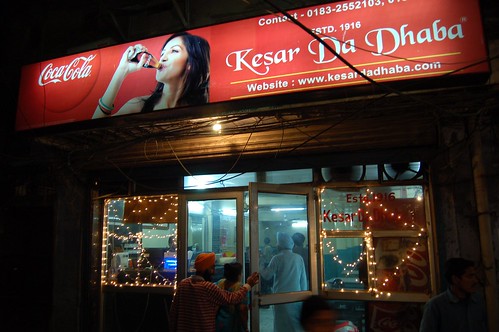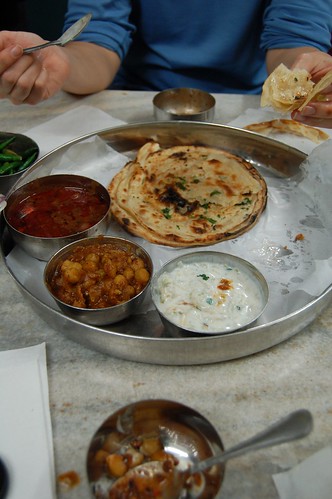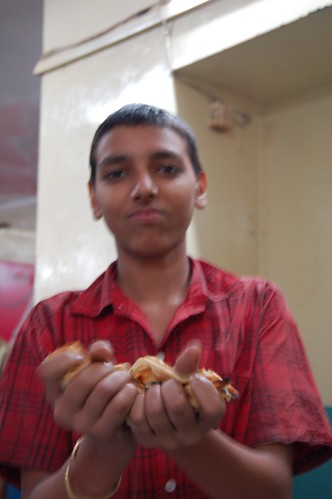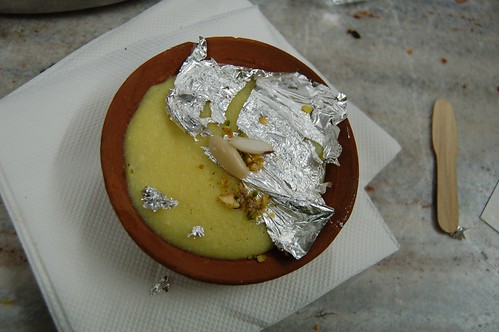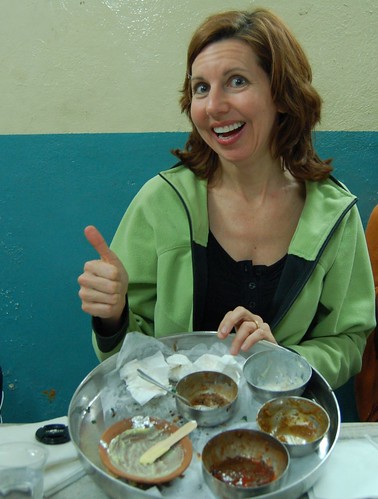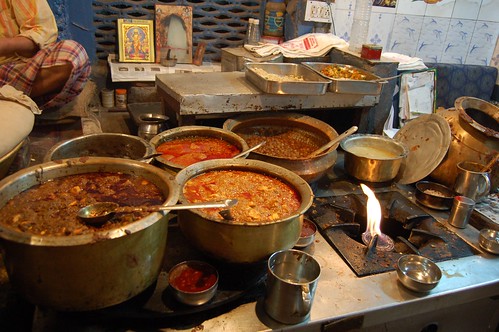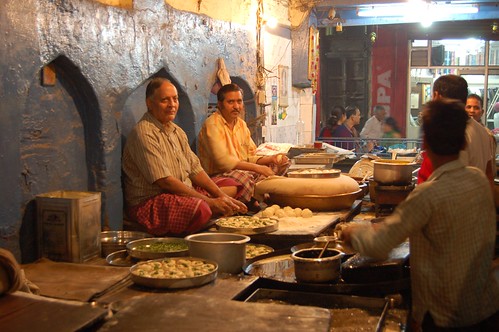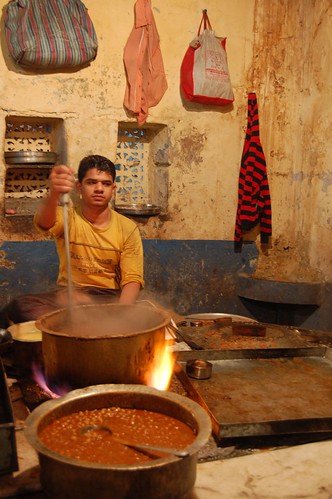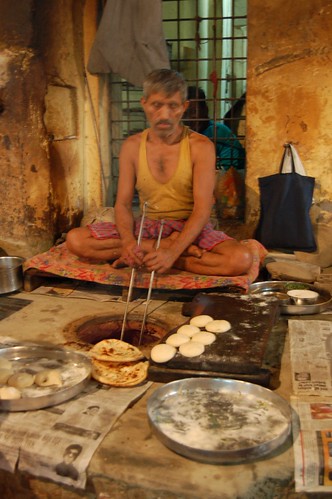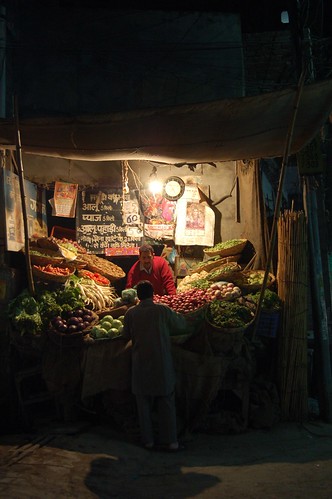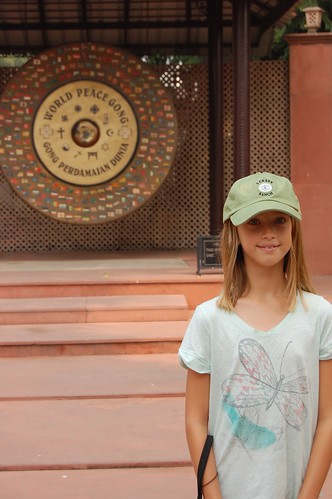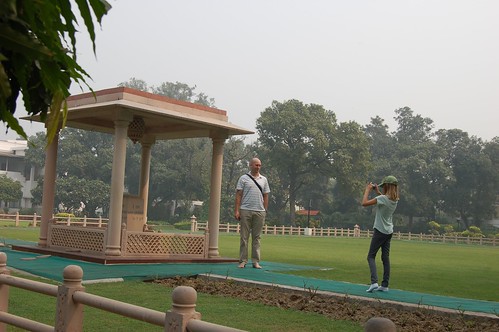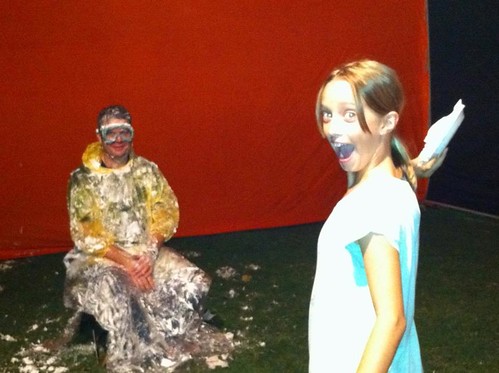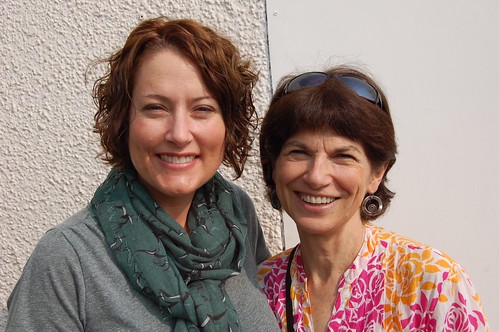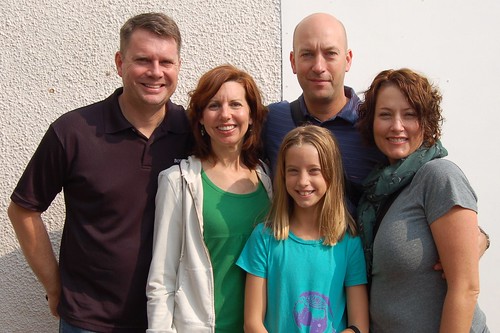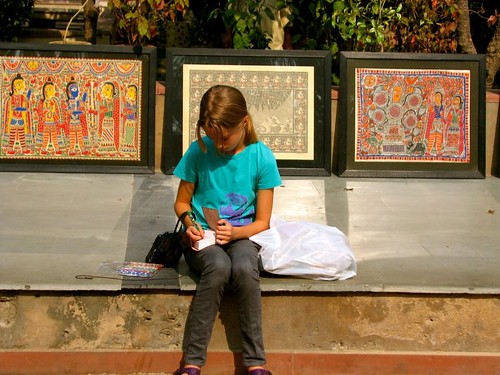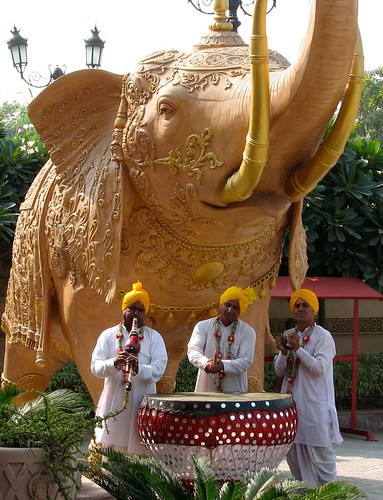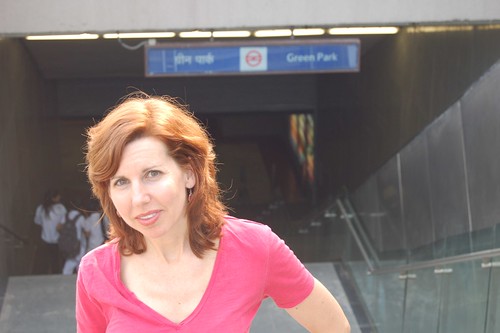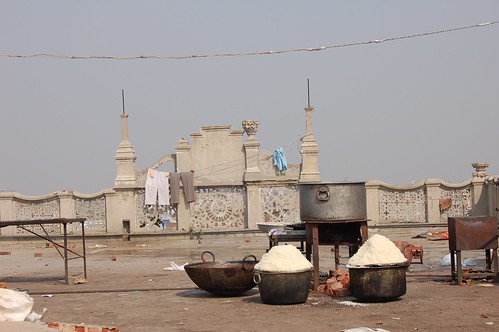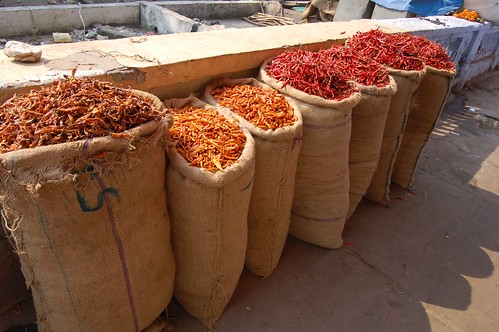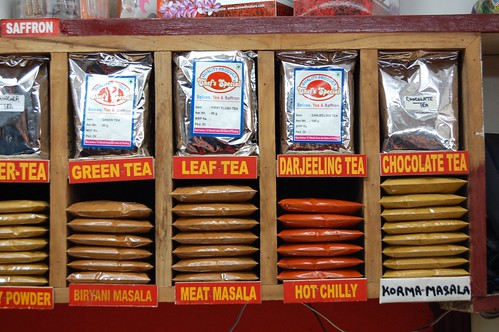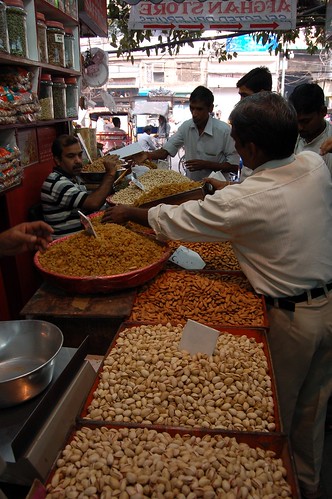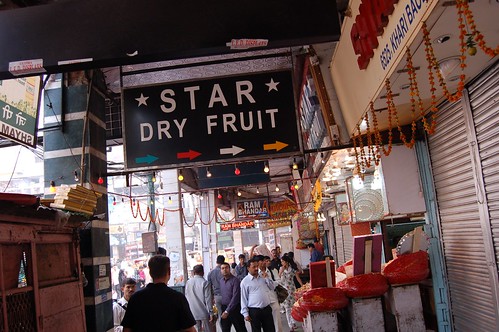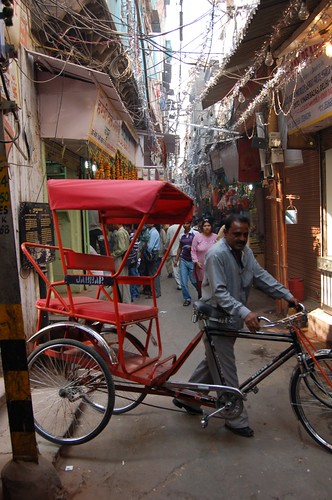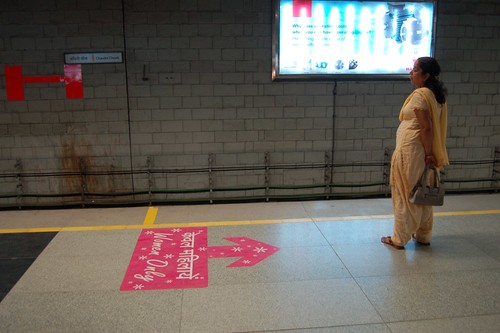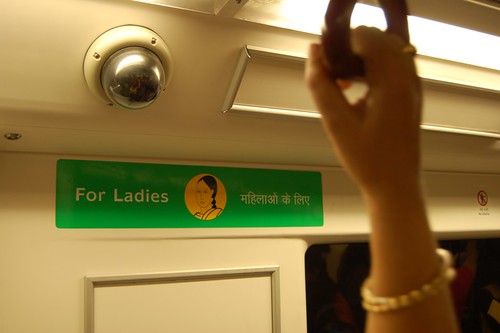After grumbling about working on Thanksgiving, I happily got home from school that evening and packed a bag for our weekend excursion to Amritsar. Located about 260 miles northwest of Delhi in the state of Punjab, Amritsar is the spiritual center of the Sikh religion. It’s also just a short drive from Wagah, a village that was split in 1947 with the end of British rule. Independence brought Partition, so the eastern half of Wagah went to India, and the western half to Pakistan.
Wagah is now home to the main road border crossing between the two countries and an unusual ceremony that has closed the border each night since 1959. The Border Security Force of India and the Pakistan Rangers engage in a series of choreographed marching, foot-stomping, high-kicking, head-wobbling, thumb-gesturing bravado before lowering the Pakistani and Indian flags in perfect unison, shaking hands and shutting the gates.
Shortly after checking in to our hotel in Amritsar, we hired a taxi to the border. Our driver dropped us off, pointed us in the right direction and told us to meet him at that same spot after the ceremony. We joined the throng on a road lined with vendors selling snacks and souvenirs. At the security checkpoint, we ladies breezed through and watched Tony slowly ebb forward with the sea of men until he finally emerged for his pat-down by a camouflage-clad guard. We passed through another security area set up for VIP foreign passport holders that spat us out at the “Foreigners Gallery.” Among the VIPs were several other teachers from our school!
Crowds on both sides of the border filled the stands, shouting nationalistic slogans and waving the flags for their respective countries. In India, an image of Gandhi overlooked the pre-ceremony revelry that included energetic dancing to Bollywood tunes and cheers of “Hin-du-stan!” Just a few yards away in Pakistan, the country’s first governor-general, Muhammad Ali Jinnah, watched Muslim spectators divided into gender-specific sections, alternately chanting “Pak-i-stan!” and playing Koranic verses.
We couldn’t see the goings-on in Pakistan very well. However, the Indian activities were perplexing enough to keep us riveted. First, two female guards marched dramatically from the staging area to the gate. Next, several guards lined up at a microphone. One at a time, they took a deep breath and then hollered what sounded like, “Goooaalll!” in an apparent competition to stretch it out the longest. Eventually, they all marched (a bit out of sync) to the gate and back, stomped a bit, led the crowd in more cheering and ultimately opened and closed the Indian gate a few times. I assume the Pakistani guards were putting on their own version of the show until they opened their gate. (Note to other countries considering this type of ceremony: The Pakistani gate slides open, which is much more dramatic than the Indian gates, which swing open from the middle.) When both gates were open and the guards had faced off with some clomping and shaking of their pleated headwear, they took the ropes from the flagpoles and simultaneously lowered the Pakistani and Indian flags. Flags folded and carried away, a guard and a ranger exchanged a quick handshake and a smile before slamming the gates for the night.
According to news reports, the confrontational ceremony was toned down starting last year to reflect the desire for better relations between the two neighbors. The vibe on our side was definitely one of pride and giddiness more than anger, but who knows what tensions rippled below the surface and beyond the gate?
I had hoped to pose with the guards following the ceremony but the surge of Indians with the same plan dissuaded me. Instead, I snapped a few shots of the rapturous crowd and made a quick escape.
Here’s a video of our experience at the Wagah border.
Here’s some old BBC footage featuring Michael Palin on the Pakistan side of the gate. Much nicer production quality than mine!
Ironically, Michael Palin also starred in the Monty Python sketch, “The Ministry of Silly Walks,” which I’ll post here just to amuse myself. (Another teacher pointed out the irony!)


